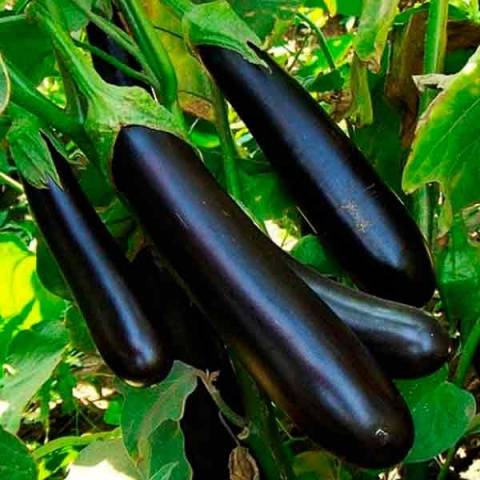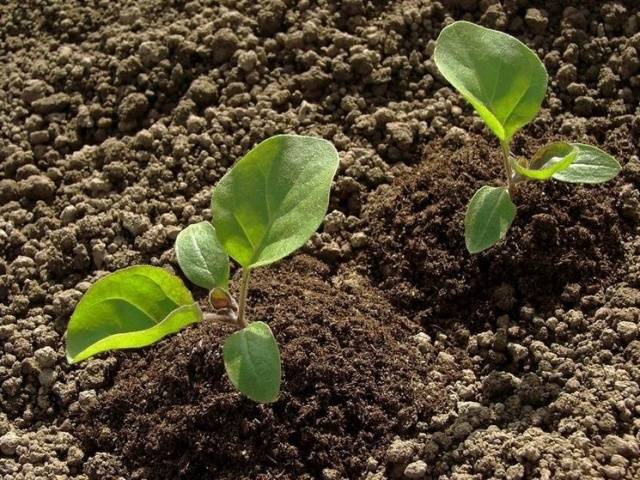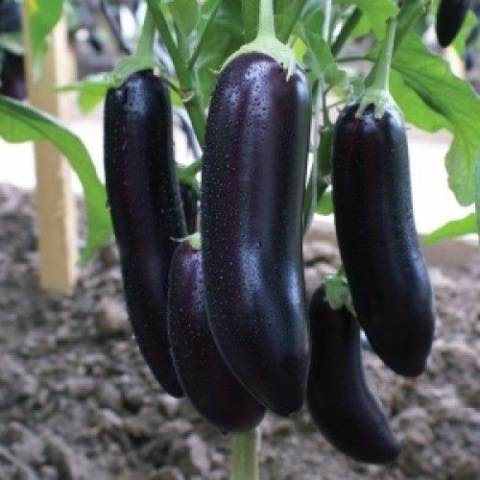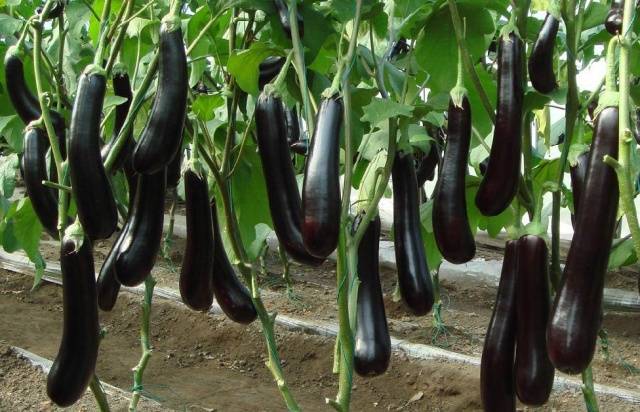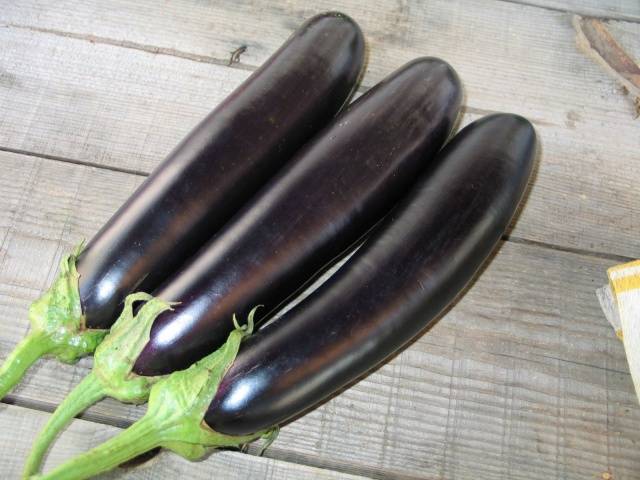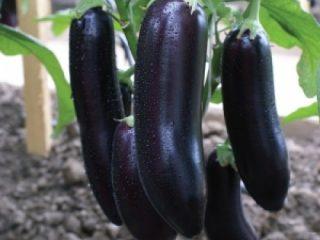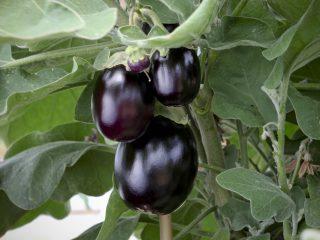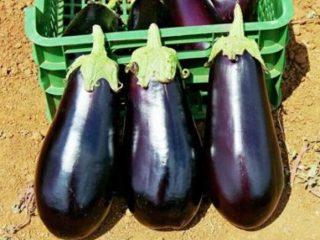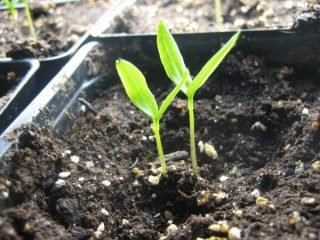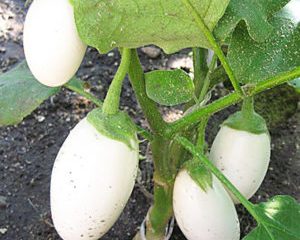Content
Eggplant Khalif is an unpretentious variety that is resistant to temperature fluctuations. The variety is distinguished by elongated fruits and good taste without bitterness. Suitable for growing under cover and in open areas.
Characteristics of the variety
Description of the Khalif eggplant variety:
- average ripening time;
- 115-120 days pass from the emergence of seedlings to the harvesting of fruits;
- semi-spreading bush;
- plant height up to 0.7 m;
- absence of thorns.
Features of the fruits of the Khalif variety:
- elongated club-shaped;
- slightly curved fruit;
- length 20 cm;
- diameter 6 cm;
- dark purple color;
- glossy surface;
- weight 250 g;
- whitish pulp;
- no bitter taste.
The Khalif variety has universal application. Its fruits are used to prepare snacks and side dishes. In home canning, caviar is obtained from eggplants, they are marinated with other vegetables, and assorted dishes are prepared for the winter.
Khalif eggplants are harvested 30 days after flowering. Overripe fruits lose their taste. Vegetables are cut using pruning shears. Eggplants have a limited shelf life. Fruits can be stored in the refrigerator for no more than a month.
Growing order
Khalifa eggplants are grown through seedlings, which are obtained at home. The seeds are planted in prepared soil, and the sprouts are provided with the necessary microclimate.In cool climates, plants are grown under cover.
Planting seeds
Planting work begins in March. Khalifa eggplant seeds are pre-processed. For 3 days, the planting material is kept in a solution of potassium humate. For disinfection, the seeds are placed in a solution of the drug Fitosporin.
The soil for eggplant seedlings is prepared in the fall. It is obtained by combining peat, compost and garden soil in a ratio of 6:2:1. It is allowed to use a purchased substrate for vegetable crops that contains the necessary components.
Khalif eggplant seedlings are grown in cassettes or cups. It is not recommended to plant seeds in boxes, as the plants do not tolerate picking.
Eggplant seeds are buried 1 cm in moist soil. Plantings are covered with film to obtain a greenhouse effect. Eggplant germination occurs after 10-15 days. During this period, monitor the soil moisture and periodically turn the film over.
Conditions for seedlings
After germination, Khalif eggplants are transferred to a lighted place. Plantings are provided with the necessary conditions:
- daytime temperature 20-24 °C;
- night temperature not lower than 16 °C;
- adding moisture;
- ventilation of the room;
- lighting for 12-14 hours.
Eggplant seedlings are watered with warm water. The need to add moisture is indicated by drying of the top layer of soil.
Plants require constant lighting. If the daylight hours are not long enough, then lighting is installed above the seedlings. It is better to use fluorescent or phytolamps. Lighting devices are turned on in the morning or evening.
When Khalif eggplants develop 1-2 leaves, you need to transplant them into larger containers. When growing in cups or cassettes, you can do without picking. The safest method for plants is the transshipment method. Seedlings are planted in larger containers without breaking the earthen ball.
2 weeks before planting, the plants are placed on the balcony. At first, the plantings are kept in the fresh air for several hours, gradually increasing this period. Hardening will help plants quickly adapt to their permanent location.
Landing in the ground
Eggplants are transferred to a greenhouse or an open bed at the age of 2-2.5 months. The plants have 7-10 leaves and the stem height reaches 25 cm.
The soil for growing the crop is prepared in the fall. Eggplants develop best in sandy loam or loam soil. The area should be well lit by the sun and not subject to wind load.
In the autumn, humus is added when digging the ground. The properties of clay soil are improved with coarse sand.
If peppers, tomatoes or potatoes grew in the garden a year earlier, then you should choose a different place. Replanting the crop is possible only after 3 years.
In spring, the soil in the beds is loosened with a rake and planting holes are prepared. A handful of wood ash is placed in each of them and a little earth is poured. Leave 30-40 cm between plants.
After abundant watering, seedlings are placed in the planting hole. The roots of the plants are sprinkled with earth, which is compacted slightly.
Care plan
According to reviews, Khalif eggplants produce high yields with regular care. Plants are watered and fed with organic matter or mineral solutions.
As plants develop, they require support in the form of a wooden or metal strip. The fruit clusters also need to be tied up. 5-6 of the most powerful ovaries are left on the bushes, the rest are cut off.
Watering
Khalif eggplants require constant moisture. Its lack leads to shedding of ovaries and wilting of leaves.
The intensity of watering is determined by the stage of plant development. Before flowering, eggplants are watered every 5-7 days. During drought, moisture is added every 3-4 days. To maintain soil moisture, its surface is mulched with peat.
To water the plants, take warm, settled water at a temperature of 25 °C. It is poured strictly at the root, do not allow it to get on the leaves and stems of eggplants. To prevent jets of water from washing away the soil, use special spray nozzles for watering cans.
After watering, the soil is loosened to prevent crust formation. Loosening saturates the soil with oxygen, and plant roots better absorb nutrients.
Feeding
Regular feeding strengthens the immune system and increases the productivity of Khalif eggplants. For feeding, solutions of mineral substances or organic matter are used. It is best to alternate such treatments with an interval of 2-3 weeks.
Before flowering, eggplants are fed with nitrogen-containing products. A solution of mullein is poured under the root of the plants in a ratio of 1:15. From minerals they use diammofoska in the amount of 20 g per 10 liters of water.
After flowering, Khalif eggplants are watered with solutions based on potassium and phosphorus. For a 10-liter bucket of water, take 30 g of potassium sulfate and superphosphate.Nitrogen should be abandoned so that the plant’s energy is not spent on the formation of shoots.
Instead of minerals, wood ash is used. It is added to water when watering or embedded in the soil.
Diseases and pests
The Khalif variety is resistant to verticillium and fusarium wilt. The disease is caused by a fungus that penetrates plant tissue. As a result, the leaves wither and the crop dies. Affected bushes cannot be treated; they are destroyed. The remaining plantings are treated with Fitosporin or Baktofit.
To prevent diseases, planting material and garden tools are disinfected. The greenhouse is regularly ventilated and the soil moisture is monitored.
Insects are often carriers of diseases. Eggplants are susceptible to attack by the Colorado potato beetle, spider mites, aphids, and slugs. Dusting with tobacco dust or wood ash helps protect plants from pests. Among the chemicals used, Karbofos or Kltan.
Reviews from gardeners
Conclusion
Khalifa eggplants are valued for their unpretentiousness, productivity and good taste. The crop is grown through seedlings. Seeds are also planted at home. Caring for the variety consists of watering, fertilizing and loosening the soil. If agricultural practices are followed, plants are less susceptible to diseases.
